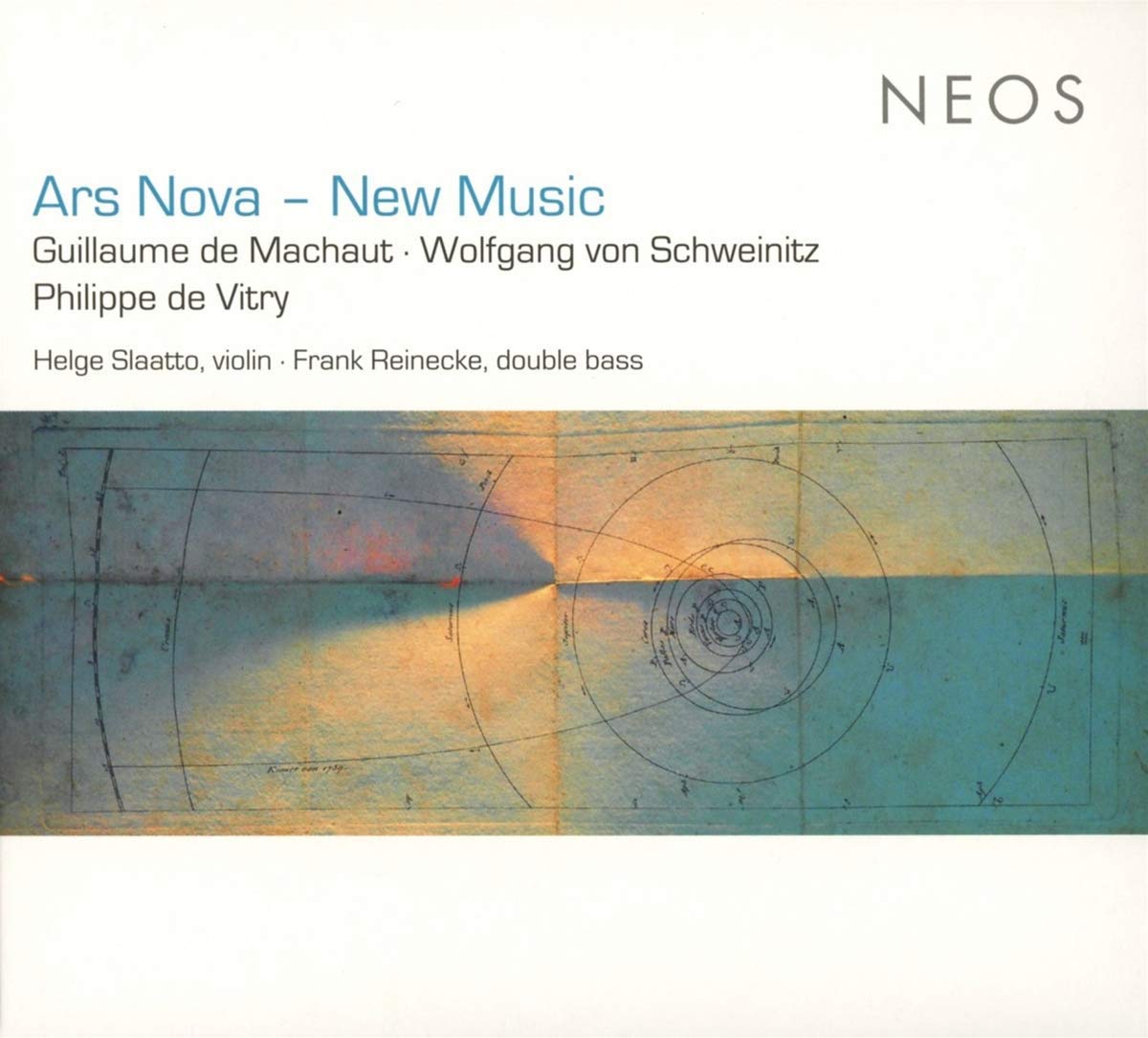

Helge Slaatto / Frank Reinecke
Neos 21802
amazon.com:
Ars Nova · New Music / Helge Slaatto · Frank Reinecke
Guillaume de Machaut | Wolfgang von Schweinitz | Philippe de Vitry
[20.2.2019]


Helge Slaatto / Frank Reinecke
Neos 21802
amazon.com:
The music of Guillaume de Machaut and Philippe de Vitry was radically new over 650 years ago; Vitry himself coined the term "ars nova" for it. Now Helge Slaatto (violin) and Frank Reinecke (double bass) show how closely the power of this music was connected to the common intonation system of the time, based on pure perfect fifths, which lead to highly tense thirds. Wolfgang Schweinitz examined this system for a long time and became one of the pioneers of just intonation. "Study No. I op. 61a" can be considered the quintessential result of this work. Using the tiniest microtonal distinctions, for which he even developed his own notation system, he creates a music consisting purely of intervals derived from the harmonic series. The Slaatto-Reinecke duo, who have been specialists in just intonation for many years, draw a fascinating line from the Ars Nova of the 14th century to the New Music of our time.
Although adapted for string duo (and carefully according to specific Pythagorean tuning principles — 3-limit JI), the Ars Nova selections are clearly recognizable. Other than the choice of modern instruments, these are thus straightforward (& unadorned) interpretations, highlighting period tuning for contemporary audiences.
[20.2.2019]
medieval.org Remarks
http://www.medieval.org/emfaq/cds/remarks.html
25 February 2019
Todd M. McComb
———
Although I haven't generally featured contemporary arrangements
here, I do want to make a few remarks about Ars
Nova - New Music, which features music by Machaut & De
Vitry adapted for a modern string duo (of violin & double bass).
In particular, the emphasis is on illustrating the importance of
Pythagorean tuning to Ars Nova music — & the program thus
includes a (9+') contemporary musical study on the divisions of the
major third (as differing by the Pythagorean comma) as well.
The
Ars Nova selections are generally performed without repeats (although
the most elaboration is reserved for Machaut's monophonic lai,
Amours doucement me tente in its first recorded performance...),
such that an "essential" quality is conveyed —
particularly by the sequence of twenty different songs by Machaut.
These are wonderfully crisp, & generally briefly evocative
interpretations.... The Machaut selections don't visit his most
contrapuntally involved music, though, which might give an impression
of the limits of the project or approach, but then the program turns
to the academic motet in all its glory (albeit at an earlier stage
than much of Machaut's music), in the De Vitry motets from Le
Roman de Fauvel. The technical precision in each case is
superlative, such that the performance provides an exceptionally
clear illustration of Machaut's melodic & contrapuntal sense,
and then serves substantially to clarify & amplify the detailed
interactions in the motets as well. (Note that the adaptations
thus go beyond two-voice settings.)
Although the performance itself
is thus outstanding — & could serve as a worthwhile
introduction to Ars Nova music in general — the historical
comments included are more often dubious: I'd be inclined to look
past them, given the fine performance, but they read specifically
like something out of a music textbook from a couple of generations
ago. When are these notions ever, finally updated? (Again, I think
this is an emerging commentary on the increasing inability to find
anything but mainstream commercial information online these days
— at least absent much more effort than was required not so
very long ago....) Also, there's an implication that these performers
have somehow initiated Pythagorean tuning for this music, which
likewise dates back nearly 40 years.... So although I strongly
agree with the performers that Pythagorean tuning is essential to
making much (sense) of the music, I simply find it strange that
they seem to be operating so blindly with regard to decades of
research on these points. (How is this even possible?) I guess I
do have to give them a pass on that, though, since the actual sonic
result is so polished & illuminating.
[4.3.2019]